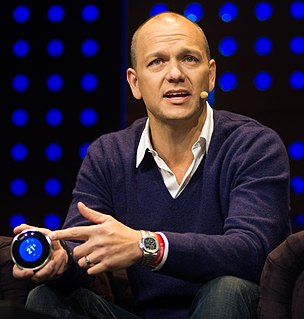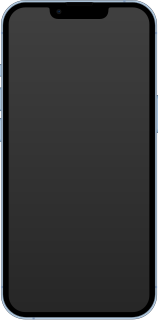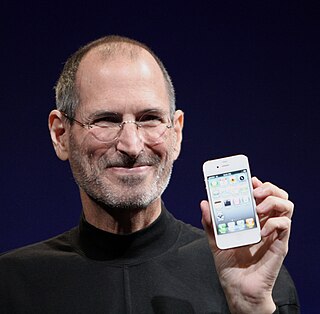Trade secrets are a type of intellectual property that includes formulas, practices, processes, designs, instruments, patterns, or compilations of information that have inherent economic value because they are not generally known or readily ascertainable by others, and which the owner takes reasonable measures to keep secret. Intellectual property law gives the owner of a trade secret the right to restrict others from disclosing it. In some jurisdictions, such secrets are referred to as confidential information.

The iPod is a discontinued series of portable media players and multi-purpose mobile devices designed and marketed by Apple Inc. The first version was released on October 23, 2001, about 8+1⁄2 months after the Macintosh version of iTunes was released. Apple sold an estimated 450 million iPod products as of 2022. Apple discontinued the iPod product line on May 10, 2022. At 20 years, the iPod brand is the oldest to be discontinued by Apple.

GO Corporation was founded in 1987 to create portable computers, an operating system, and software with a pen-based user interface. It was famous not only for its pioneering work in Pen-based computing but as well as being one of the most well-funded start-up companies of its time.

Anthony Michael Fadell is an American engineer, designer, entrepreneur, and active investor. He is the co-creator of the iPod and the iPhone, and founder and former CEO of Nest Labs.
The Apple community is a group of people interested in Apple Inc. and its products, who report information in various media. Generally this has evolved into a proliferation of websites, but latterly has also expanded into podcasts, either speculating on rumors about future product releases, simply report Apple-related news stories, or have discussions about Apple's products and how to use them.
The Uniform Trade Secrets Act (UTSA), published by the Uniform Law Commission (ULC) in 1979 and amended in 1985, is a Uniform Act promulgated for adoption by states in the United States. One goal of the UTSA is to make the state laws governing trade secrets uniform, which is especially important for companies that operate in more than one state. Historically, the law governing misappropriation of trade secrets developed separately in each state.

Apple Inc., formerly Apple Computer, Inc., is a multinational corporation that creates consumer electronics, personal computers, servers, and computer software, and is a digital distributor of media content. The company also has a chain of retail stores known as Apple Stores. Apple's core product lines are the iPhone smartphone, iPad tablet computer, and Macintosh computer line. Founders Steve Jobs, Steve Wozniak, and Ronald Wayne created Apple Computer Co. on April 1, 1976, to market Wozniak's Apple I desktop computer, and Jobs and Wozniak incorporated the company on January 3, 1977, in Cupertino, California.

Jonathan J. "Jon" Rubinstein is an American electrical engineer who played an instrumental role in the development of the iMac and iPod, the portable music and video device first sold by Apple Computer Inc. in 2001. He left his position as senior vice president of Apple's iPod division on April 14, 2006.

Computer Associates International, Inc. v. Altai, Inc., 982 F.2d 693 is a decision from the United States Court of Appeals for the Second Circuit that addressed to what extent non-literal elements of software are protected by copyright law. The court used and recommended a three-step process called the Abstraction-Filtration-Comparison test. The case was an appeal from the United States District Court for the Eastern District of New York in which the district court found that defendant Altai's OSCAR 3.4 computer program had infringed plaintiff Computer Associates' copyrighted computer program entitled CA-SCHEDULER. The district court also found that Altai's OSCAR 3.5 program was not substantially similar to a portion of CA-SCHEDULER 7.0 called SYSTEM ADAPTER, and thus denied relief as to OSCAR 3.5. Finally, the district court concluded that Computer Associates' state law trade secret misappropriation claim against Altai was preempted by the federal Copyright Act. The appeal was heard by Judges Frank Altimari, John Daniel Mahoney, and John M. Walker, Jr. The majority opinion was written by Judge Walker. Judge Altimari concurred in part and dissented in part. The Second Circuit affirmed the district court's ruling as to copyright infringement, but vacated and remanded its holding on trade secret preemption.
The multinational technology corporation Apple Inc. has been a participant in various legal proceedings and claims since it began operation and, like its competitors and peers, engages in litigation in its normal course of business for a variety of reasons. In particular, Apple is known for and promotes itself as actively and aggressively enforcing its intellectual property interests. From the 1980s to the present, Apple has been plaintiff or defendant in civil actions in the United States and other countries. Some of these actions have determined significant case law for the information technology industry and many have captured the attention of the public and media. Apple's litigation generally involves intellectual property disputes, but the company has also been a party in lawsuits that include antitrust claims, consumer actions, commercial unfair trade practice suits, defamation claims, and corporate espionage, among other matters.

The iPhone is a line of smartphones designed and marketed by Apple Inc. These devices use Apple's iOS mobile operating system. The first-generation iPhone was announced by then-Apple CEO Steve Jobs on January 9, 2007. Since then, Apple has annually released new iPhone models and iOS updates. As of November 1, 2018, more than 2.2 billion iPhones had been sold.

Scott James Forstall is an American software engineer, known for leading the original software development team for the iPhone and iPad, and Broadway producer, known for co-producing the Tony award-winning Fun Home and Eclipsed with Molly Forstall, his wife, among others. Having spent his career first at NeXT and then Apple, he was the senior vice president (SVP) of iOS Software at Apple Inc. from 2007 until October 2012.

The history of the iPhone development by Apple Inc. spans from the early 2000s to about 2010. The first iPhone was released in 2007. By the end of 2009, iPhone models had been released in all major markets.
Proprietary software, also known as non-free software or closed-source software, is computer software for which the software's publisher or another person reserves some licensing rights to use, modify, share modifications, or share the software, restricting user freedom with the software they lease. It is the opposite of open-source or free software. Non-free software sometimes includes patent rights.

Mark D. Papermaster is an American business executive currently serving as the chief technology officer (CTO) and executive vice president for Technology and Engineering at Advanced Micro Devices (AMD). On January 25, 2019 he was promoted to AMD's Executive Vice President. Papermaster previously worked at IBM from 1982 to 2008, where he was closely involved in the development of PowerPC technology and served two years as vice president of IBM's blade server division. Papermaster's decision to move from IBM to Apple Inc. in 2008 became central to a court case considering the validity and scope of an employee non-compete clause in the technology industry. He became senior vice president of devices hardware engineering at Apple in 2009, with oversight for devices such as the iPhone. In 2010 he left Apple and joined Cisco Systems as a VP of the company's silicon engineering development. Papermaster joined AMD on October 24, 2011, assuming oversight for all of AMD's technology teams and the creation of all of AMD's products, and AMD's corporate technical direction.
Data General Corp. v. Digital Computer Controls, Inc. was a 1971 case in which the Delaware Court of Chancery determined that widespread, confidential disclosure of trade secrets does not necessarily compromise their secrecy. Data General Corporation distributed design documentation with its Nova 1200 minicomputer, notifying owners of the confidentiality of these design drawings through contractual agreements and explicit text on the drawings. After acquiring drawings with a Nova 1200 purchase, Digital Computer Controls designed its own nearly identical minicomputer. Digital Computer Controls maintained that its use of the documentation was proper because Data General Corporation inadequately maintained the secrecy of the design drawings by distributing them to many customers. The court found that Data General Corporation had sufficiently protected the secrecy of the drawings and that Digital Computer Controls was thus in violation of trade secret law for improperly using confidential information.

The iPhone is the first iPhone model and the first smartphone designed and marketed by Apple Inc. After years of rumors and speculation, it was officially announced on January 9, 2007, and it was released in the United States on June 29, 2007.

iPhone OS 1, commonly referred to as iOS 1, is the first major release of iOS, Apple's mobile operating system. No official name was given on its initial release; Apple marketing literature simply stated that the iPhone runs a version of Apple's desktop operating system, OS X. On March 6, 2008, with the release of the iPhone software development kit, Apple named it iPhone OSIt was succeeded by iPhone OS 2 on July 11, 2008.

The Apple A8 is a 64-bit ARM-based system on a chip (SoC) designed by Apple Inc. It first appeared in the iPhone 6 and iPhone 6 Plus, which were introduced on September 9, 2014. Apple states that it has 25% more CPU performance and 50% more graphics performance while drawing only 50% of the power of its predecessor, the Apple A7. The latest software updates for the 1.1GHz and 1.4GHz variants systems using this chip are iOS 12.5.5, released on September 23, 2021 as they were discontinued with the release of iOS 13 in 2019, while updates for the 1.5GHz variant continue for the iPad Mini 4 and Apple TV HD.
Jeff Williams is Apple's chief operating officer under CEO Tim Cook, a position he has held since December 2015.













